Statistics for Euromillions
Statistics of real draws
Lucky Stars statistics of Euromillions consider draws carried out since September 27, 2016, when the rules/matrix changed (range of lucky stars).
Euromillions (until the draw 1906 on
Dec 26, 2025)
Frequency by year
Total occurrences of each number in each year
Year 2025
Number
Actual frequency
Expected frequency
05
02
12
09
06
07
08
01
10
03
11
04
|
No.
|
Actual
occurrences
|
Expected
occurrences
|
Last
draw
|
Shortest
interval
|
Longest
interval
|
Current
interval
|
Average
interval
|
|
05
|
24
|
17.17
|
1902
|
1
|
10
|
4
|
4.29
|
|
02
|
20
|
17.17
|
1903
|
1
|
14
|
3
|
5.15
|
|
12
|
20
|
17.17
|
1905
|
1
|
21
|
1
|
5.15
|
|
09
|
19
|
17.17
|
1898
|
1
|
16
|
8
|
5.42
|
|
06
|
18
|
17.17
|
1899
|
1
|
10
|
7
|
5.72
|
|
07
|
17
|
17.17
|
1897
|
1
|
16
|
9
|
6.06
|
|
08
|
17
|
17.17
|
1900
|
1
|
21
|
6
|
6.06
|
|
01
|
16
|
17.17
|
1904
|
1
|
13
|
2
|
6.44
|
|
10
|
16
|
17.17
|
1903
|
1
|
22
|
3
|
6.44
|
|
03
|
15
|
17.17
|
1906
|
1
|
16
|
0
|
6.87
|
|
11
|
15
|
17.17
|
1905
|
1
|
16
|
1
|
6.87
|
|
04
|
9
|
17.17
|
1906
|
1
|
21
|
0
|
11.44
|
- The table shows data on the quantity of draws in which each number was drawn on the chosen year, considering all the draws of euromillions (with the current matrix).
- Actual occurrences are the total actual occurrences of the numbers in draws that happened during the chosen year.
- Expected occurrences are the expected occurrences for each number on the chosen year, according to mathematical probability.
- Last draw is the most recent draw in which the number was drawn on the chosen year.
- Shortest interval is the shortest gap between draws that happened on the chosen year in which the number was drawn.
- Longest interval is the longest gap between draws that happened on the chosen year in which the number was drawn.
- Current interval is the current gap since the last draw that happened on the chosen year in which the number was drawn (only considering draws of that year).
- Average interval is the general average of intervals between draws that happened on the chosen year in which the number was drawn (until the last draw that happened on the chosen year in which the chosen number was drawn).
- The actual and expected occurrences tend to get closer to each other the largest the sample.
Main
Results
Statistics
Wheels
Subscription


